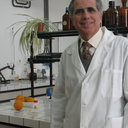Ultraviolet C irradiation at 0.5 kJ.m(-)(2) reduces decay without causing damage or affecting postharvest quality of star ruby grapefruit (C. paradisi Macf.).
Słowa kluczowe
Abstrakcyjny
Star Ruby grapefruit [Citrus paradisi (Macf.)] were harvested in November, February, and May, treated with ultraviolet C (UV-C) light at 0.5, 1.5, or 3.0 kJ.m(-)(2), and then stored at 7 degrees C and 90-95% relative humidity (RH) for 4 weeks with 1 additional week at 20 degrees C and approximately 80% RH. Untreated fruits were used as control. UV-C irradiation at 0.5 kJ.m(-)(2) effectively reduced decay development as compared to nontreated fruit without causing damage. Irradiation at dosages >0.5 kJ.m(-)(2) did not further improve decay control and caused rind browning and necrotic peel, the extent of damage depending on treatment dosage and harvest date. The percentage of damaged fruit after irradiation at the higher UV-C dosages was significantly higher in fruit harvested in November; differences between fruits harvested in February and May were negligible. After UV-C irradiation, the phytoalexins scoparone and scopoletin accumulated in flavedo tissue, their amounts depending on harvest date and UV-C dosage. Both phytoalexins showed similar accumulation patterns, although the concentrations of scoparone were much lower than those of scopoletin. Phytoalexin levels increased in most samples as the treatment dosage increased. No detectable levels of scoparone and scopoletin could be found in nonirradiated fruit. The influence of UV-C treatments on soluble solids concentration and titratable acidity of juice was negligible.


